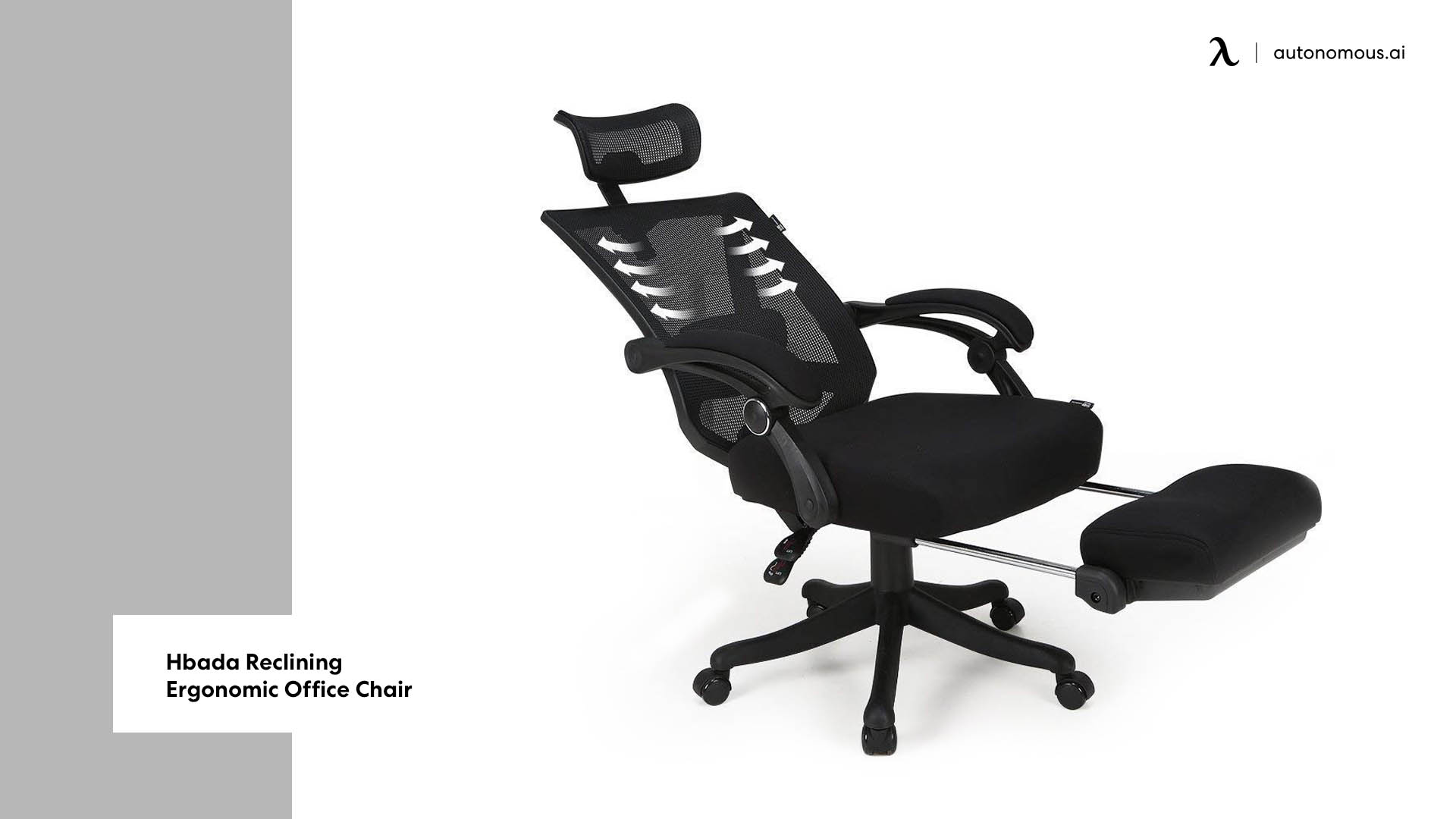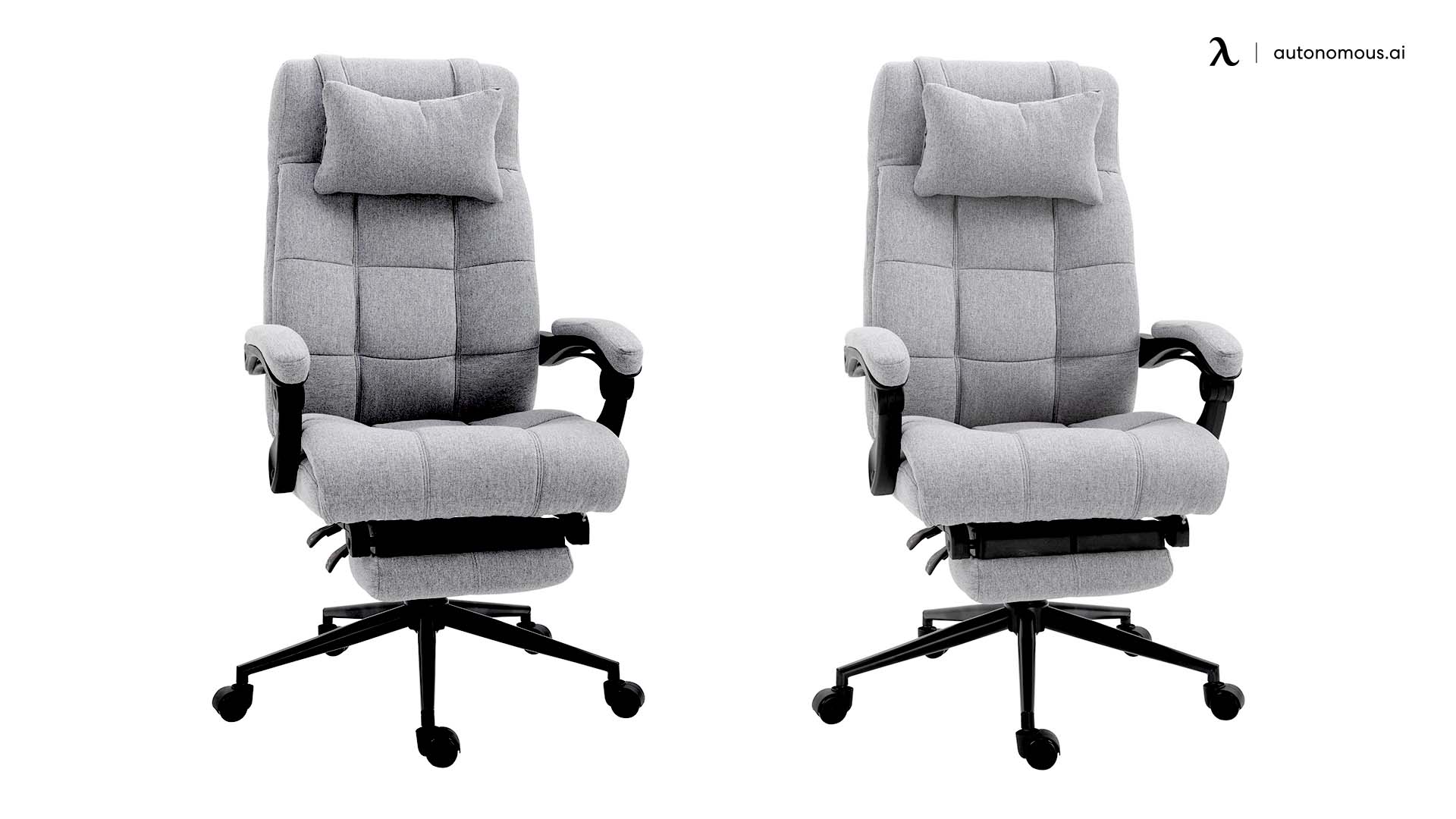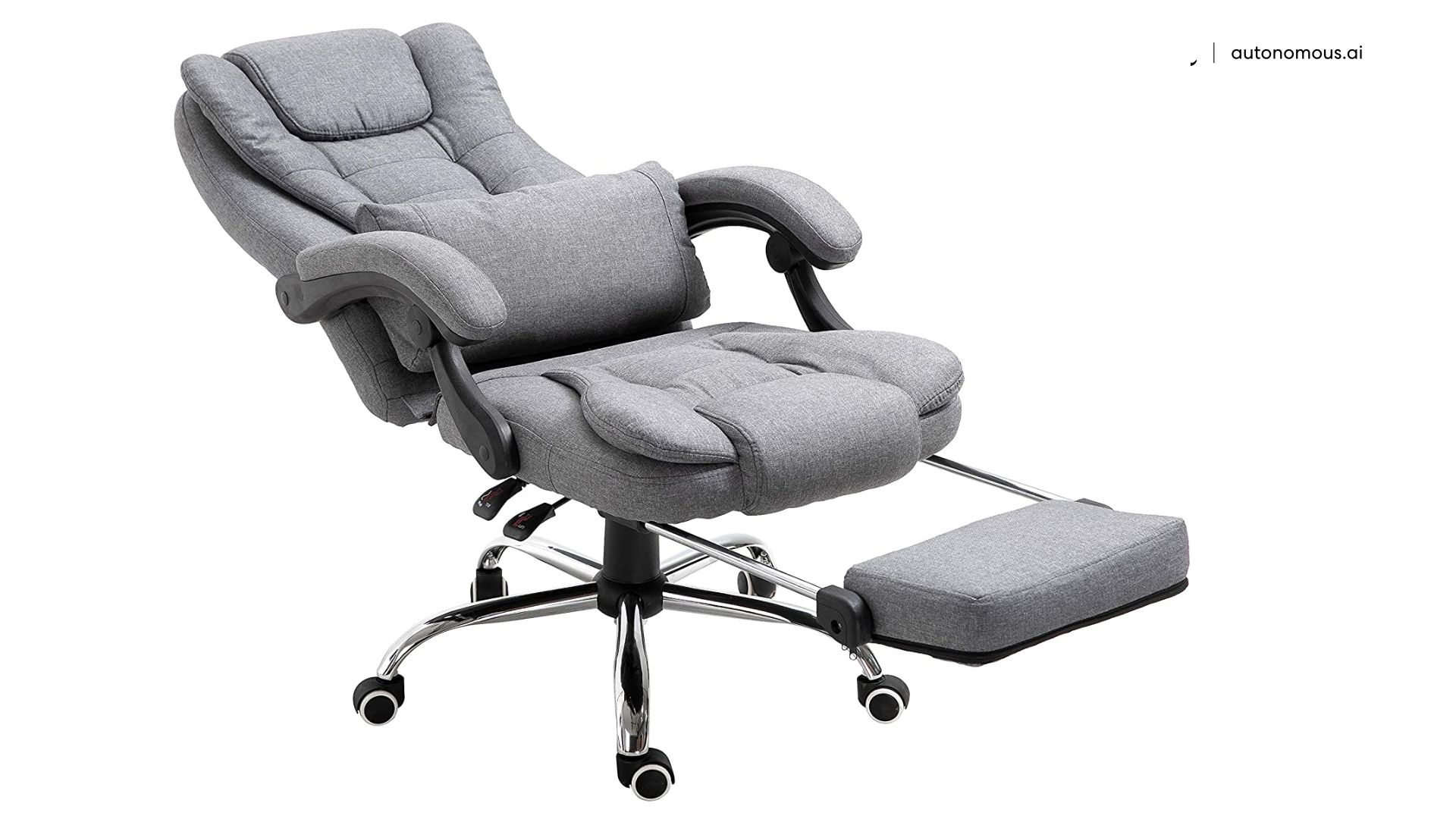Top Reclining Office Chairs with Footrests

Indulge in the luxurious embrace of comfort and support with our comprehensive review of top-tier reclining office chairs featuring integrated footrests. These havens of ergonomic design promise to transform your workday, offering unparalleled relaxation and postural well-being. Prepare to embark on a journey through a curated selection, each chair a testament to meticulous craftsmanship and innovative design.
Top Reclining Office Chairs with Footrests: A Comparative Overview, Reclining office chair with footrest reviews
The following table presents a comparative analysis of five popular reclining office chairs with footrests, considering price, key features, and user comfort. This overview serves as a foundation for a deeper dive into the individual strengths and weaknesses of each model.
| Brand | Price Range | Key Features | User Comfort Rating (out of 5) |
|---|---|---|---|
| Hbada Ergonomic Office Chair | $150 – $250 | High-density foam cushioning, adjustable lumbar support, adjustable headrest, retractable footrest, breathable mesh back | 4.2 |
| Flash Furniture Nicholas Contemporary Mesh Executive Swivel Office Chair | $200 – $300 | Breathable mesh back, adjustable lumbar support, adjustable armrests, tilt-lock mechanism, built-in footrest | 4.0 |
| SIHOO Ergonomic Office Chair | $250 – $350 | Adjustable lumbar support, adjustable headrest, adjustable armrests, retractable footrest, high-quality PU leather | 4.5 |
| Amazon Basics Mid-Back Mesh Office Chair | $100 – $180 | Breathable mesh back, adjustable height, tilt-lock mechanism, basic lumbar support, attachable footrest (sold separately) | 3.8 |
| NEO CHAIR Ergonomic Office Chair | $300 – $400 | Adjustable lumbar support, adjustable headrest, adjustable armrests, retractable footrest, high-quality PU leather, advanced tilt mechanism | 4.3 |
Reclining office chair with footrest reviews – Understanding the nuances of each chair is crucial for making an informed decision. The following sections detail the advantages and disadvantages based on aggregated user reviews.
Advantages and Disadvantages of Each Chair
This section provides a concise summary of the positive and negative aspects of each chair, gleaned from numerous user reviews. This information should assist in navigating the complexities of choosing the perfect chair for your individual needs.
- Hbada Ergonomic Office Chair: Advantages: Excellent value for money, comfortable for extended use. Disadvantages: Footrest may not be as sturdy as others.
- Flash Furniture Nicholas Chair: Advantages: Stylish design, good breathability. Disadvantages: Lumbar support could be more pronounced.
- SIHOO Ergonomic Office Chair: Advantages: Superior ergonomics, highly adjustable. Disadvantages: Price point is higher than some competitors.
- Amazon Basics Chair: Advantages: Affordable, basic functionality. Disadvantages: Lacks advanced ergonomic features, footrest sold separately.
- NEO CHAIR Ergonomic Office Chair: Advantages: Premium materials, advanced tilt mechanism. Disadvantages: Higher price point.
Ergonomic Feature Comparison: Top Three Chairs
A detailed examination of the ergonomic features of the top three chairs—SIHOO, Hbada, and NEO CHAIR—reveals subtle yet significant differences in their design philosophies. This comparison focuses on key aspects impacting user comfort and posture.
The SIHOO and NEO CHAIR models boast superior adjustability, offering a wider range of motion for both the backrest and armrests. This allows for precise customization to individual body types and preferences. The Hbada chair, while offering good adjustability, may not be as comprehensive. In terms of back support, all three provide lumbar support, but the SIHOO and NEO CHAIR often receive higher praise for their more pronounced and adaptable lumbar curves. Seat depth is another critical factor, and the NEO CHAIR generally offers a slightly deeper seat, catering to users with longer legs. The Hbada chair’s seat depth is adequate for most, while the SIHOO falls somewhere in between. In essence, while all three chairs provide excellent ergonomic support, the SIHOO and NEO CHAIR excel in offering greater customization and potentially better support for a wider range of body types.
User Experiences and Common Issues

The symphony of sighs and contented groans emanating from countless home offices speaks volumes about the reclining office chair with footrest. A throne for productivity, it promises comfort and support, yet, like any complex instrument, it can sometimes fall out of tune. Understanding the common complaints and triumphs of these chairs provides a crucial counterpoint to the idealized marketing images, offering a realistic perspective for potential buyers.
The experience of reclining office chairs with footrests is a tapestry woven from threads of both praise and critique. While many users find solace and enhanced productivity within their embrace, others encounter challenges that diminish the overall experience. A nuanced understanding of these issues is essential for informed decision-making.
Common Complaints and Their Root Causes
Three common complaints consistently surface in online reviews. First, the recurring theme of insufficient lumbar support plagues many users. The root cause often lies in a poorly designed or inadequately adjustable lumbar support system. Chairs lacking sufficient curvature or with inflexible adjustments fail to provide the necessary spinal alignment, leading to discomfort and potential back pain. Second, many users lament the instability of the reclining mechanism. This often stems from low-quality components, inadequate reinforcement, or a poorly designed locking mechanism, resulting in unsettling movements and a feeling of insecurity. Third, the footrest itself is a frequent source of discontent. Issues range from insufficient length or adjustability, making it unsuitable for users of varying heights, to flimsy construction and a lack of sturdiness, resulting in discomfort and potential instability.
Positive User Experiences
The positive experiences, however, often overshadow the negatives. Many users extol the virtues of these chairs, finding them indispensable to their work and well-being.
“This chair is a lifesaver! The recline feature and footrest allow me to take short breaks throughout the day without having to get up completely. My back pain has significantly reduced since I started using it.”
“I love the massage function! It’s a great way to relieve tension after a long day of work. The chair is also very comfortable and supportive.”
“The adjustable features are perfect. I can customize the chair to fit my exact needs, ensuring optimal comfort and support throughout the workday. It’s a significant upgrade from my old office chair.”
Durability and Longevity of Materials
The lifespan and comfort of a reclining office chair are significantly influenced by the materials used in its construction. User feedback highlights distinct differences in the durability and longevity of various materials.
- Mesh: Generally praised for its breathability and flexibility, mesh often shows signs of wear and tear more quickly than other materials, particularly around the seat and backrest. Its elasticity can diminish over time, affecting its support and comfort.
- Leather: Known for its luxurious feel and durability, leather can develop cracks and wrinkles with prolonged use, especially if not properly maintained. Genuine leather tends to be more resilient than its synthetic counterparts.
- Fabric: Fabric upholstery offers a wide range of textures and aesthetics, with durability varying greatly depending on the specific material and construction. Some fabrics can be prone to staining and wear, while others prove remarkably resistant.
Buying Guide and Considerations: Reclining Office Chair With Footrest Reviews

Embarking on the quest for the perfect reclining office chair with footrest requires careful consideration. The ideal chair is more than just a seat; it’s an investment in your comfort, productivity, and long-term well-being. This guide navigates the complexities of choice, ensuring you find the throne fit for your body and work style.
Choosing the right reclining office chair with a footrest is a journey, not a sprint. A methodical approach, factoring in your individual needs and preferences, will lead you to a chair that provides years of comfortable support. Consider this your roadmap to ergonomic bliss.
Budgetary Allocations and Value Assessment
Establishing a clear budget is paramount. Reclining office chairs with footrests range dramatically in price, reflecting differences in materials, features, and build quality. A modest budget might lead you to a functional chair with basic features, while a higher budget opens doors to premium materials like genuine leather and advanced ergonomic adjustments. Consider the chair as an investment in your health and productivity; a higher upfront cost might translate into long-term savings by preventing back pain and improving work efficiency. For example, investing in a high-quality chair might save you money on physiotherapy down the line.
Body Type and Ergonomic Fit
Your body type dictates the chair’s ideal dimensions and support features. Consider your height, weight, and posture. A chair too small will lack adequate support, while one too large might feel cumbersome and unstable. Look for chairs with adjustable features, such as seat height, backrest angle, and armrest position. For instance, a taller individual would benefit from a chair with a higher backrest and adjustable lumbar support. A wider individual might need a chair with a broader seat to ensure proper weight distribution.
Work Style and Usage Patterns
Your work style significantly influences your chair’s ideal features. Those who spend long hours sitting should prioritize ergonomic features like lumbar support, adjustable headrests, and breathable materials to prevent discomfort and fatigue. For individuals who frequently recline, durability and stability are crucial. A chair intended for occasional use might not withstand the rigors of daily, extended use. For example, a software developer who spends long hours coding might prioritize a chair with excellent lumbar support and adjustable armrests for optimal posture. In contrast, someone who uses the chair for shorter periods might prioritize aesthetics and style over extensive adjustability.
Essential Feature Checklist
Before making your purchase, meticulously review these crucial features:
- Adjustability: Seek a chair with adjustable seat height, backrest angle, armrests, and lumbar support. This adaptability caters to diverse body types and postures.
- Comfort and Support: Prioritize cushioning and lumbar support to promote proper spinal alignment and prevent discomfort. Consider the material’s breathability to minimize overheating.
- Footrest Functionality: Ensure the footrest is sturdy, easily adjustable, and retractable when not in use. Check for smooth operation and secure locking mechanisms.
- Durability and Construction: Examine the chair’s frame, base, and wheels for sturdiness. Opt for high-quality materials and robust construction for long-term reliability.
- Reclining Mechanism: The reclining mechanism should be smooth, easy to operate, and lock securely in different positions. Test the mechanism thoroughly before purchase.
- Warranty and Customer Service: A reputable manufacturer offers a warranty covering defects and provides responsive customer service. Check the warranty details carefully before purchasing.
